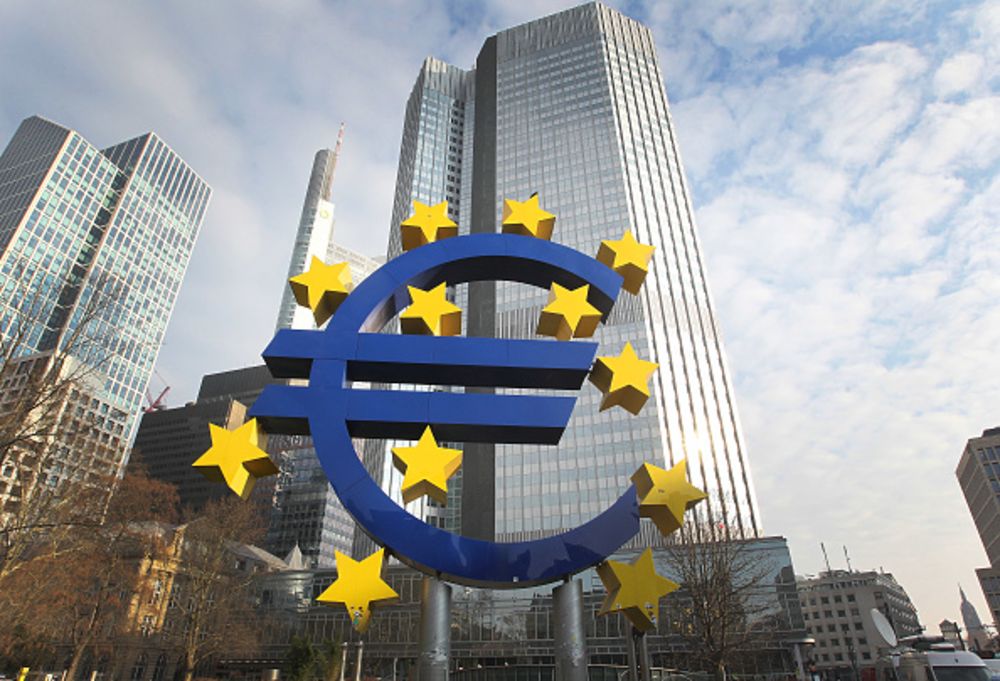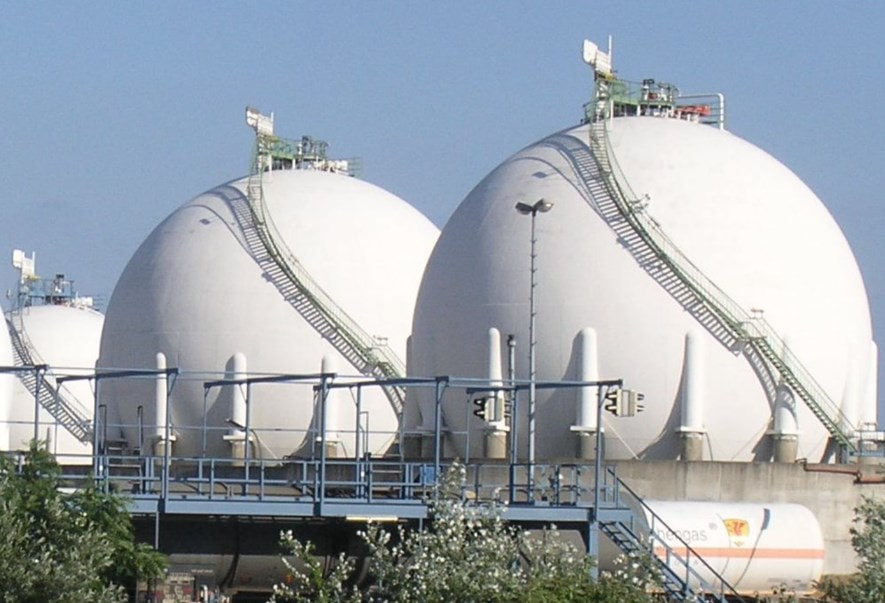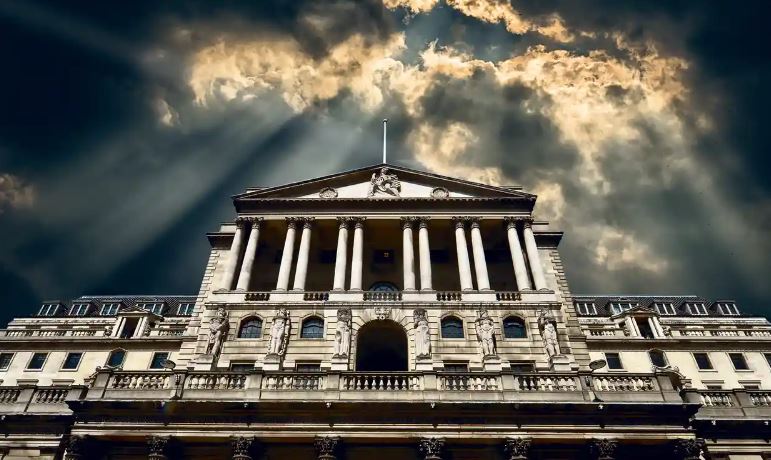As expected, the Federal Reserve hiked rates by 75bp, taking the target range for the federal funds rate to 2.25-2.5%. In the statement they acknowledge that "recent indicators of spending and production have softened", but that "job gains have been robust". In addition, they remain "highly attentive to inflation risks" and anticipate that "ongoing increases in the target rate will be appropriate". Here are a few more quotes:
So where do we go from here? The probability is for a 50bp in September. This gives us almost 2 months until their next meeting on the 21st September and during that time, we'll have seen two more inflation reports, two more jobs reports and the Fed's Jackson Hole symposium. Clearly, a lot can happen in two months! In terms of forward guidance, Jerome Powell said that the central bank would decide monetary policy on a “meeting by meeting basis” and would not provide forward guidance as before. In addition, he said that any future rate hikes will depend on the data. In the meantime, the Fed’s base case remains a soft landing even though there is some uncertainty around this. Indeed, this looks like it will be a real challenge to achieve in the current circumstances. The immediate priority is getting inflation under control, and the probability for a 50bp hike at the September FOMC is very strong with further 50bp and 25bp hikes before the end of the year.
0 Comments
The ECB's Announcement
The decision to hike by 50bp took some by surprise. In fact, since the June meeting the ECB had repeatedly confirmed its ‘intention’ to hike rates by 25bp in July, before accelerating the hiking pace from September onwards. Today's rate hike isn't going to bring down inflation in the short term, not even on the demand side of the economy. In fact, the demand side will react significantly more to a recession, if indeed, a recesssion is looming. The objective of the hike and any further potential hikes, is to bring down inflation expectations. There is also the issue of ECB's damaged reputation as an inflation fighter and today's announcement helps to repair this. Does this mean that the ECB is more concerned about their credibility over being predictable? Forward Guidance Cast your mind back to the end of last year and you may remember the ECB president Christine Lagarde giving her own personal forward guidance that she was not expecting rate hikes in 2022. Fast forward to the June 2022 meeting where a 25bp hike was the intention for July, and now we see that this was wrong. Perhaps forward guidance is no longer a useful tool for central banks, particularly in times of high uncertainty. Perhaps it would be pragmatic to take any further forward guidance from the ECB about rate hikes beyond September, with a pnch of salt!
Freeport has been closed since US pipeline safety regulators said they had found unsafe conditions at the plant and that they will not allow the plant to restart until an outside analysis is complete. Freeport, the second-biggest U.S. LNG export plant, was consuming about 2 billion cubic feet per day (bcfd) of gas before it shut on the 8th June, with an expected 90-day outage. This would leave around 180 billion cubic feet (bcf) of gas available to the U.S. market. The U.S. Energy Information Administration (EIA) said utilities added 82 bcf of gas to storage during the week ended June 24, exceeding the 74-bcf build analysts had forecast and increases of 73 bcf in the same week last year and a five-year (2017-2021) average increase of 73 bcf. Front-month gas futures for August delivery fell $1.074, or 16.5%, to settle at $5.424 per million British thermal units (mmBtu), their lowest close since March 29. That was the biggest one-day percentage decline since late January when prices fell about 26%. For the month, the contract fell about 33% in June, its biggest monthly decline since dropping 36% in December 2018. Natural gas futures had rallied 51% during the first quarter as a result of much higher demand from Europe and Asia. The invasion of Ukraine stoked fears that Russia would cut gas supplies to Europe leaving European companies turning to the US for LNG exports. This is down from around 6.5 bcfd in mid June and an average of 11.6 bcfd in June 2021.
The United States is the world's top producer of natural gas, however, most of it's production is for domestic use, and capacity constraints limit LNG exports. With hotter weather coming, analysts have projected average U.S. gas demand including exports will rise from 94.1 bcfd this week to 95.3 bcfd next week. As a result of the Freeport outage, the average amount of gas flowing to U.S. LNG export plants has dropped to 11.1 bcfd so far in June from 12.5 bcfd in May and a record 12.9 bcfd in March. The seven big U.S. export plants can turn about 13.6 bcfd of gas into LNG. With this significant decrease in flow to Freeport, utilities have been able to stockpile more fuel than expected, pushing prices down in the futures market.
The housing market in the US was already looking to be in trouble as mortgage rates rise in a market where prices have increased 35% nationally over the last 2 years and saving for a deposit is a real challnge. The situation could transition from one of excess demand to one of excess supply. This will ultimately lead to a correction in house prices in the coming quarters. The new home sales number released today increases the probabilities of this situation playing out. There was a huge drop from March’s 709k (originally reported as 763k) down to 591k in April, more than 150k below the consensus 749k, which was very optimisitic.
Rising Mortgage Rates Hitting Demand Tomorrow’s mortgage application data will be important given that weaker transactions will mean weaker activity. If there is another big drop, which is possible given the surge in mortgage rates, we could see increasing fears on the economic impact. We've already seen home builders reporting a drop in new buyer enquiries and with rising costs and labour shortages, there isn't much incentive to start new building. Construction makes up 4% of the economy and retail sales of furnishings, furniture, building materials etc, all correlate with housing activity. Home Inventories Rising Inventory of homes for sale continues rising with nine months-worth of sales now sitting on the market – the largest proportion since 2010. Weakening demand and rising supply imply the possibility that house prices will soon peak and start to fall. Rising interest rates in an environment of falling home prices are not a good combo for consumer sentiment and these factors will ultimately increase the probabilities of a recession down the road. This is not a great headline for the US economy, but lets take a closer look as it might not be as bad as the headline numbers suggest. If we look at domestic demand, we see that it is holding up very well, particularly in the face of the Omnicron wave which had an impact on economic momentum. In fact, consumer spending grew 2.7%, while non-residential investment expanded 9.2% and residential investment posted a 2.1% gain.
What Caused the Negative GDP Number? It was the drop in exports which was a result of weak foreign demand due to Covid restrictions, and a surge in imports that meant net trade subtracted a full 3.2 percentage points from headline GDP growth. With ongoing supply chain disruptions and inventories being run down, this has subtracted a further 0.8% while government spending fell in consecutive quarters and subtracted 0.5pp. Another Fed Hike in May? With inflation pressures remaining elevated and the labour market looking tight, today's disappointing GDP numbers shouldn't derail the outlook for a 50bp Fed interest rate hike next week. With all of these ingredients in the economic melting pot, we are likely to hear a lot more chatter about stagflation rearing it's ugly head. With these numbers hitting the headlines, it's quite a challenge to see how UK consumer spending will avoid a downturn over the coming months. Could this prompt the Bank of England to slow down its rate rises, even with the inflation surpises we keep seeing? Lets take a closer look. The Cost of Living Squeeze Fuel prices are up 11% since the start of the year, and household energy bills have increased by an average of 54% this month, with another 30% increase looking likely in October. The consensus is for inflation to peak close to 9% in April but there is potential for it to move into double digits. This is all causing a cost of living squeeze but it doesn't fully explain the recent downtrend in retail sales. It is highly likely that consumers are switching to services after the Omnicron wave. According to the monthly GDP numbers, the balance between retail and hospitality/recreation spending is now back to pre-virus levels, after a long period of above-average goods demand. If our hypotheis is correct and consumers continue with a preference for services rather than goods, then we are likely to see the cost of living crises showing up more in the retail numbers over the next few months. However, around 8% of GDP worth of ‘excess’ household savings has been built up during the pandemic, albeit most of this is concentrated in higher-income earners, and they are less likely to feel the impact of the cost of living squeeze. Payroll data also shows that higher income groups have had a noticeable acceleration in wage growth over the past two years, relative to the two years preceding the pandemic. This is in comparison to those in the lower-income percentiles who have not seen any noticeable acceleration in wage growth. So there is money to spend from the high income earners but aboslutely no guarantees that they will!
The Consumer Outlook According to the Bank of England, the near-term outlook for rate hikes heavily depends on whether the consumer outlook turns rapidly over the next few weeks, or whether any fall in spending is more gradual. One view is that a sharp deterioration in growth conditions could help to ‘short-circuit’ the ratchet higher in prices being set by companies. The jury is still out but we could see the BoE hike interest rates a few more times before pasuing over the summer months. The "zero-COVID" policy in China has resulted in a strict lockdown of 26 million people in Shanghai. This has led to lower expectations of oil demand in the second quarter of 2022 and the full year as a whole, the IEA said in its monthly Oil Market Report for April.
In addition to this, OPEC has cut its oil demand growth estimate for 2022 by almost 500,000 bpd due to lower expected global economic growth resulting from COVID lockdowns in China and teh Ukraine war. According to the IEA, lower demand expectations and steady output increases from OPEC+ members along with the US and other non OPEC+ countries, and massive stock releases from IEA member countries should prevent a sharp deficit from developing. Global inventories continued to draw down in February, with OECD industry stocks falling by another 42.2 million barrels to 2.611 billion barrels in February, nearly double the seasonal trend. Hower, in March, preliminary data shows a build in OECD industry stocks of 8.8 million barrels per the IEA estimates. They also stated that “From May onwards, close to 3 mb/d of Russian production could be offline due to international sanctions and as the impact of a widening customer-driven embargo comes into full force,” The agency noted that the massive release of stockpiles from the U.S. and IEA allies is a “welcome relief to an already tight oil market that’s facing heightened uncertainty amid the multitude of repercussions stemming from sanctions and embargoes targeted at Russia by the international community and consumer boycotts.” According to IEA’s estimates of OPEC+ supply, the alliance’s 19 members with quotas collectively increased oil production by just 40,000 bpd in March, compared to the 400,000 bpd planned increase. U.S. President Joe Biden will be giving a speech later on Thursday with regard to the decision which is aimed at lowering gasoline prices given the record high prices that consumers are facing at the pump since the beginning of the Ukraine war. A release of 180 million barrels will help to rebalance the oil market in 2022 increasing supply by 1 million barrels per day (bpd) for six months. However, this is a temporary fix for the short term supply problems and will not resolve the structural supply deficit that has been building for many years.
If the US adminsitration go ahead with the 180 million barrels release from the SPR, then this will certainly have an effect on the oil market and we'll probably see prices decline to less than $100. This news comes after U.S. oil inventories fell by 3.4 million barrels in the week to March 25th, surpassing forecasts of a 1 million barrel drop. In conjunction with this, implied demand for gasoline and distillates has declined. Current prodcution in the US increased by 100,000 barrels per day after stalling at 11.6 million bpd since early February. News of the potential U.S. release has overshadowed the OPEC+ meeting scheduled for Thursday, however, it is expected to be a non-eventful meeting with OPEC+ sticking to its deal to increase oil production gradually.
Economic sentiment fell by 5.4 points to 108.5 in March. The largest drop in confidence was among consumers, but manufacturing businesses also saw industrial confidence decrease. Order books look healthy, but supply chain problems are already causing production shutdowns which will cause problems and headaches in the months ahead.
The service sector is set to offset some of the negative impact of manufacturing production issues in March. The reopening of economies has boosted recent demand for service sector businesses and even though we are seeing higher prices, demand expectations continue to improve for the months ahead. However, this might not last long as inflation trends higher and starts to really bite. If there is one thing that really stands out from this report is that selling price expectations for both services and industry are souring. The higher input costs due to significant increases in energy prices and further supply chain problems translate into higher core inflation in the short term. The result of this melting pot of factors is a high probabilty for a squeeze on purchasing power in conjunction with supply chain issues that will cause production problems. This is highly likely to have a negative effect on GDP growth in Q2 and it really doesn't paint a good picture for the economy over the coming months.
After a strong rally over the last three weeks, the oil markets are now in a correction and down to the 50% retracement level. These types of corrections are a normal part of price action, particularly when we see price overextending beyond three standard deviations. In those sitatuons, we are going to see a reversion to the mean, because we run out of buyers at the peak and we need a fresh impetus to keep the momentum going and there needs to be sellers to buy from. At these levels, the sellers are few and far between. We also see existing longs from lower down, starting to take their profits, and if large numbers run for the exits all at once, we get a sharp decline. However, the fundamentals don't change that quickly and the direction of travel has been set for the energy markets as the Ukraine war continues and sanctions start to take effect. So the fundamentals are clearly bullish for the forseaable future, but given the geo-politics affecting the energy markets right now, we are going to see a lot more volatility. Increased volatility increases the risk for many traders and may actually trigger alerts in their risk management and position sizing models. This is another reason for why the longs head for the exit quickly. Lowering their risk exposure. So the path of least resistance is down, until the buyers come back into the market, looking to reposition and buy at a lower price. There are more sellers too as prcies decline beleiving that the top is in and the markets are turning south. While the price action we've seen int he oil markets seems to have been quite extreme in recent weeks, it is not unusual in teh commodity markets. We get a speculative frenzy driven by the geo-politics news, the market goes parabolic and over extends. At some point, typically beyond three standard deviations, the market will correct to restore equilibrium temporarily, reverting to the mean.
To avoid significant upside price pressure, energy analysts are estimating that the market would need an additonal flow of around 2 million barrels per day for the remainder of 2022 and an additioanl 2 million barrels per day in Q2 to ease the dislocations caused by the displacement of Russian oil. The temporary 2 million barrels per day boost could come from strategic reserves, but the 2 million barrels per day additional flow for the remainder of 2022 would likely need to come from OPEC sources (including potentially Iran).
It is absolutely clear from this, that we have a tight market situation, however, the withdrawal from Russian markets has been less dramatic than expected across Europe. So far, there are indications that some of the larger EU countries are less keen than countries in the east of the EU to pursue the fastest possible reduction in Russian oil flows. Outside of the EU, the UK’s ban on the import of Russian oil has proved less dramatic than the headlines that accompanied the initial announcement, as it does not take effect until the end of 2022. In the private sector, while several companies have given assurances they will buy no more Russian oil on the spot market, thereare limited indications to suggest how they will purchase oil from Russia through their term contracts. Reducing dependance is easier said than done and we've seen governments and companies opting for longer time frames for the process of reducing dependance. Indeed, energy analysts have observed that Russian oil trade into Europe appears to be moving further into the shadows of term contracts and a greater reliance on third-party trading intermediaries, which makes the trades less visible. |
AuthorTim the trader Archives
January 2025
Categories |
Site powered by Weebly. Managed by iPage













 RSS Feed
RSS Feed